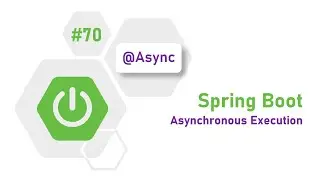What are ACID properties in the database? |
#ACID #Transaction #DBMS #ACIDProperties #Atomicity #Consistency #Isolation #Durability
What is the Database Transaction?
The transaction is a set of operations. The set of the read/write operation on the database is called the database transaction.
Read is retrieving information from the database.
Write is inserting, updating, and deleting entries from the database.
1. Atomicity
It simply says “All or Nothing”. There is no intermediate.
If you are doing any database transaction (set of the read/write operations), all the operations should be executed otherwise none.
All the operation in the transaction is considered to be one unit or atomic task.
If the system fails or any read/write conflicts occur during the transaction, the system needs to revert back to its previous state.
2. Consistency
Every attribute in the database has some rules to ensure the stability of the database. The constraint puts on the data value should be constant before and after the execution of the transaction.
If the system fails because of the invalid data while doing an operation, revert back the system to its previous state.
3. Isolation
If you are performing multiple transactions on the single database, operation from any transaction should not interfere with operation in other transactions. the execution of all transactions should be isolated from other transactions.
4. Durability
All the above three properties should be satisfied while the transaction in progress. But durability issues can happen even after the completion of the transaction.
So this is the ACID Property After Completion of Transaction.
The changes made during the transaction should exist after completion of the transaction.
Sometimes it may happen as all the operation in the transaction completed but the system fails immediately. In that case, changes made while transactions should persist. The system should return to its previous stable state.
Atomicity states that database modifications must follow an “all or nothing” rule. Each transaction is said to be atomic. If one part of the transaction fails, the entire transaction fails. It is critical that the database management system maintains the atomic nature of transactions in spite of any DBMS, operating system, or hardware failure.
Consistency states that only valid data will be written to the database. If, for some reason, a transaction is executed that violates the database’s consistency rules, the entire transaction will be rolled back, and the database will be restored to a state consistent with those rules. On the other hand, if a transaction successfully executes, it will take the database from one state that is consistent with the rules to another state that is also consistent with the rules.
Isolation requires that multiple transactions occurring at the same time not impact each other’s execution. For example, if Joe issues a transaction against a database at the same time that Mary issues a different transaction, both transactions should operate on the database in an isolated manner. The database should either perform Joe’s entire transaction before executing Mary’s, or vice-versa. This prevents Joe’s transaction from reading intermediate data produced as a side effect of part of Mary’s transaction that will not eventually be committed to the database. Note that the isolation property does not ensure which transaction will execute first—merely that transactions will not interfere with each other
Durability ensures that any transaction committed to the database will not be lost. Durability is ensured through the use of database backups and transaction logs that facilitate the restoration of committed transactions in spite of any subsequent software or hardware failures.
How ACID Works in Practice
Database administrators use several strategies to enforce ACID.
One used to enforce atomicity and durability is write-ahead logging, in which any transaction detail is first written to a log that includes both redo and undo information. This approach ensures that, given a database failure of any sort, the database can check the log and compare its contents to the state of the database.
Another method used to address atomicity and durability is shadow-paging, in which a shadow page is created when data is to be modified. The query's updates are written to the shadow page rather than to the real data in the database. The database itself is modified only when the edit is complete.
Another strategy is called the two-phase commit protocol, especially useful in distributed database systems. This protocol separates a request to modify data into two phases: a commit-request phase and a commit phase. In the request phase, all DBMSs on a network that are affected by the transaction must confirm that they have received it and have the capacity to perform the transaction. Once confirmation is received from all relevant DBMSs, the commit phase completes in which the data is actually modified.































